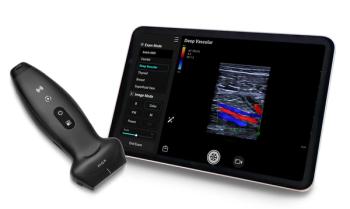
Embrace e-patients to solve burnout woes
For years, physicians have solely held the keys to health information, hoarding precious knowledge from patients because it make them feel powerful, says Daniel Sands, MD, MPH, FACP.
Sir Francis Bacon once said, “Knowledge is power.”
For years, physicians have solely held the keys to health information, hoarding precious knowledge from patients because it make them feel powerful, says
But in the age of technology and “Dr. Google,” patients are demanding to be a part of the conversation and it is time for physicians to stop fighting and let them, Sands explained while presenting at this year’s American College of Physicians 2016 Internal Medicine Meeting in Washington, D.C.
“Information is no longer locked up, [and] we need to come to terms with that and appreciate it, even if it makes us uncomfortable,” says Sands, assistant clinical professor in the department of medicine at Harvard Medical School in Boston, Massachusetts.
More from ACP 2016:
Citing a 2012 Pew Internet survey, Sands says 80% of online adults have looked for health information on their own-a number that continues to rise.
Each day, more and more of these “e-patients” search for health information than go see a physician, according to the survey results, and more than half are acting on this knowledge.
Furthermore, the survey found that one-third of adults have read about others’ health experiences online, one-quarter of adults have tracked their health information electronically, and one-third utilizes social media for their health inquiries.
But instead of embracing this shift, Sands says most physicians continue to practice medicine asymmetrically-where they are the oracles of knowledge.
“Many of us have trained this way; we like being the source of all the information,” he says. “[But patients] want to have more involvement in their care . . . (and) we put up barriers, we make it hard for them to do that.”
Related reading:
Instead, Sands says physicians should move to an information symmetry method, where they work with patients as partners in the quest for health improvement. Not not only will patients be happier with their care, but the doctor will be happier too.
“If we have to maintain an appearance that we do know everything, aren’t we living a lie? That’s stressful, and probably is leading to burnout,” he says. “(Instead), if we stop trying to remember absolutely everything . . . we can go back to being healers,” he says.
Partnering with the e-patient
So where do physicians begin to develop this relationship with their patients?
Sands offered several easy tips for teaching patients about doing online research on their health:
· Explain the quantities of good versus bad websites
· Discuss the qualities of good versus bad websites
· Encourage the patients to ask questions
“Most of the health information on the Internet [these days] is not bad and patients can actually differentiate the good from the bad,” he says.
Allowing patients to interact with their health-and you-electronically is another crucial component in fostering the partnership.
“I hate calling doctors’ offices,” Sands confessed. “I argue that this needs to end because patients are demanding it to end.”
Instead, allow patients to request and manage appointments, get prescriptions and ask medical questions at their leisure through e-messaging via patient portal.
“People want these things because that’s what they get in the real world, [such as] Amazon,” he says. “This is a huge opportunity.”
Sands explained the top 10 reasons e-messaging pays off for physicians:
10. Attain Meaningful Use 2 and 3 goals
9. Offset phone call volume
8. Have automatic documentation of patient communications
7. Reduce malpractice liability
6. Keep your patients healthier/improve outcomes
5. Increase your patients’ and your satisfaction
4. Responding to e-message is quick than phone call
3. Take care of patients in your pajamas (or workout clothes)
2. Time-shifting (flexibility)
1. See only your patients who really need face-to-face care
"A lot of us view a portal as something as utilitarian; patients can send messages if they need to,” he says. "But what you need to understand is the important, emotional effect this is having on your patients.”
Newsletter
Stay informed and empowered with Medical Economics enewsletter, delivering expert insights, financial strategies, practice management tips and technology trends — tailored for today’s physicians.


















